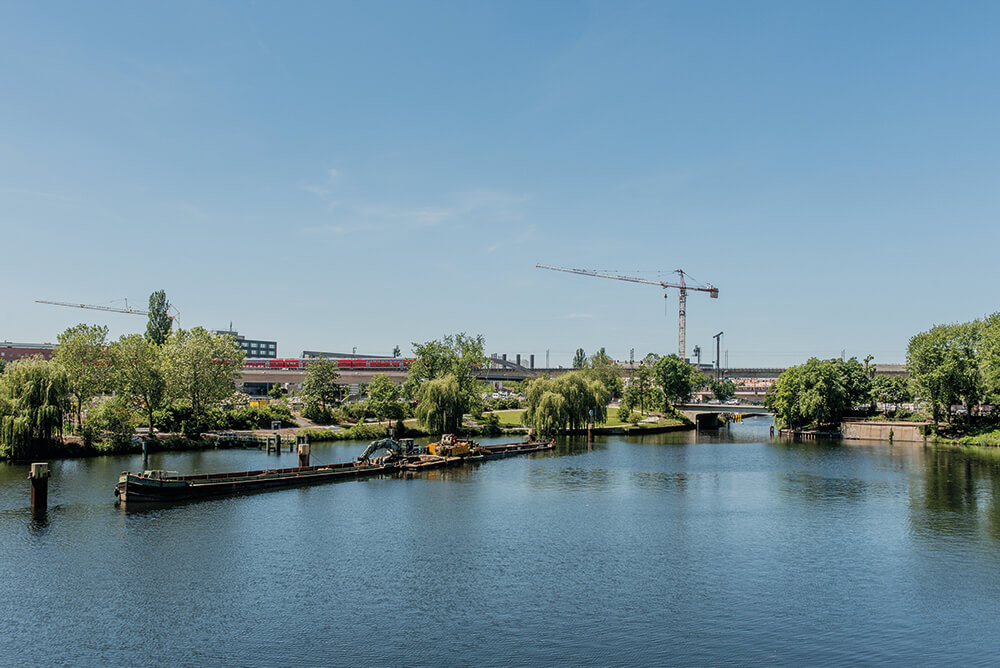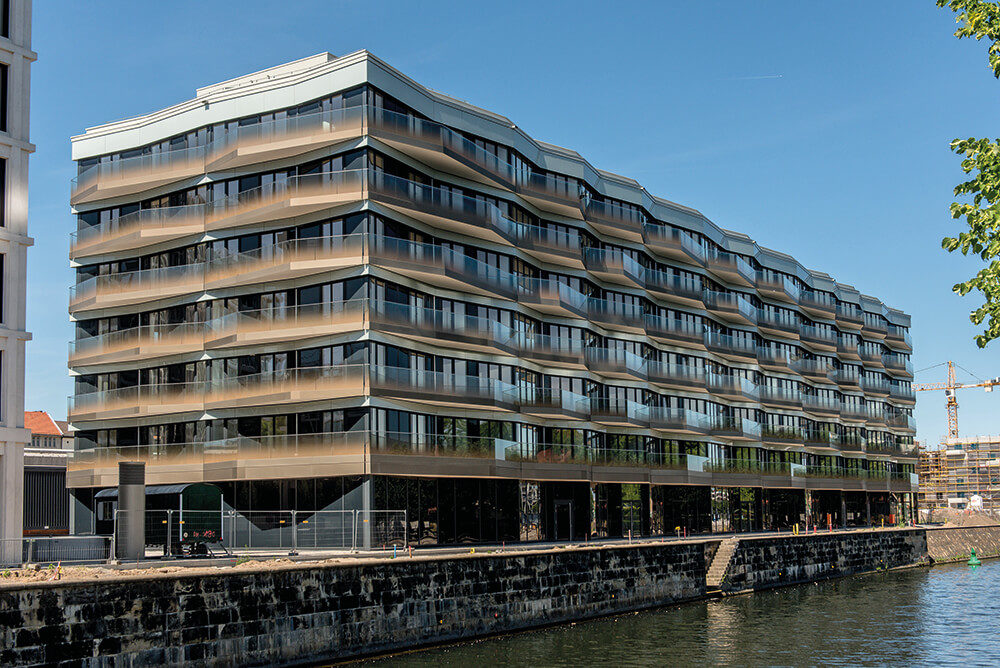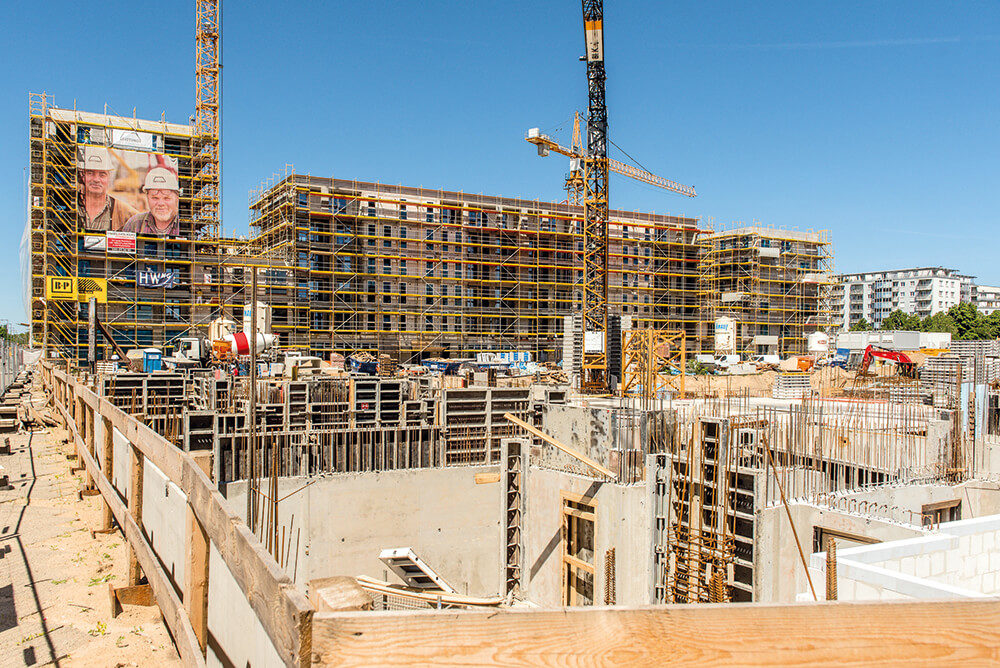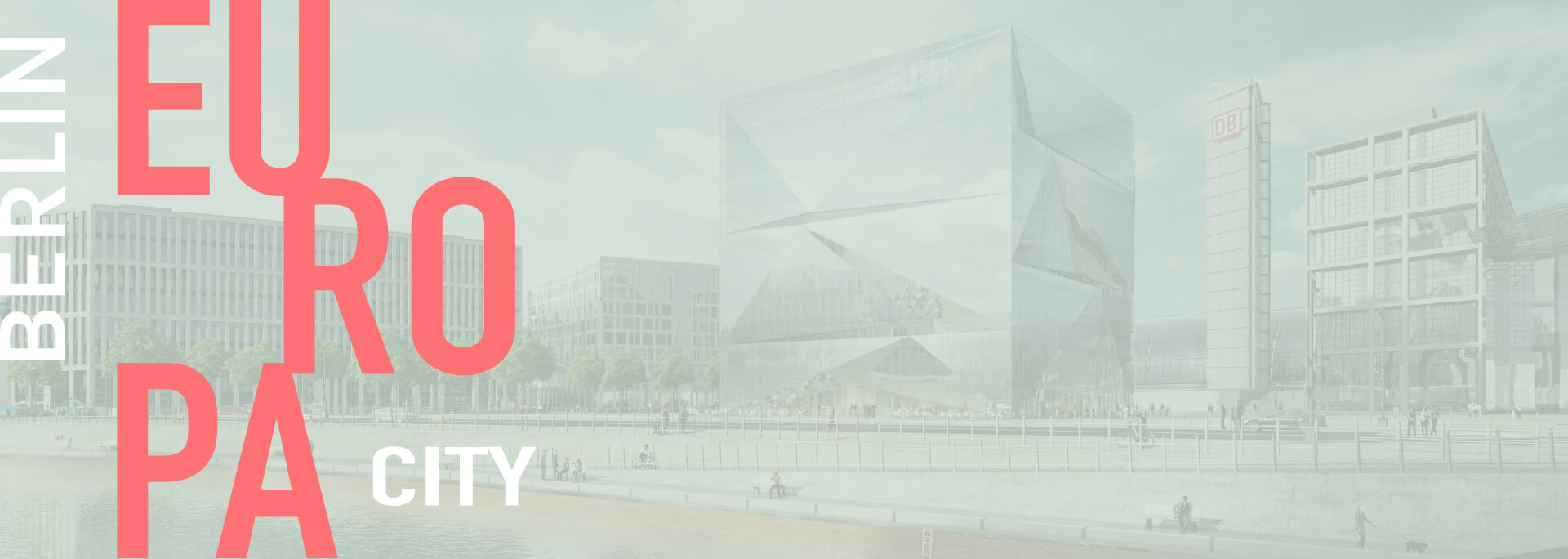The Charm of Urban Mixture
Inner city wastelands with great future are surfaces for projecting both hopes and worries. What kind of city can emerge here? We look at the area of the Europacity, as it appears today and look at the examples of quartier developments in other places.

Whoever hasn’t been around the Central Station in a long time will no longer recognise the area of the Europacity: Office buildings are completed. Apartment buildings are under construction. Major projects are in the planning stage. Whether a truly urbane quarter will develop out of it—only the future can tell.
Wait a minute. Where exactly was the plain building of “Mitte Meer”, where Berlin residents plagued by their desire for the Mediterranean used to buy their fresh fish and Spanish olive oil? And the combination of beach bar and grill restaurant in demand for a while—they must have been somewhere around the corner. Well, at least Boels is still there, the construction machine leasing company in the Heidestrasse.
Otherwise almost everything has changed for anyone who for some years has not been where the Europacity is being built. And perhaps still remembers the deprecating comments heard from many after opening of the Central Station in 2006. Railway terminal architect Meinhard von Gerkan spoke of the Siberian steppe while his colleague Hans Kollhoff felt reminded of Ulan Bator and complained about a “desert” “in which everything just stood around disconnected”.

Today one cannot talk about a desert anymore. A new hotel building houses the premises of two different hotel brands. Behind that is the Tour Total, the first building to be completed in the Europacity in 2012, 69 meters high. More office buildings have been completed or are under construction: such as for the Basler engineering firm, the KPMG auditing company and the Federal Union of German Pharmacists Associations. Above all, the ambitious new construction for the network company 50Hertz defies all those lies that prophesied that only boring standard and commercial architecture would be erected in the Europacity.
Even the first residential building, the KunstCampus, directly on the banks of the Berlin-Spandauer shipping canal, is finished. Even the perfectly expanded Heidestraße is a testimony to a grand start. If one follows it to the north, one takes a journey of discovery from the past into the future. To the left are still the undecorated buildings from the beginnings of the empire that resist all the changes since 1989—although: hasn’t a window in one of these houses been replaced?

Further north is the wasteland between Heidestrasse and railway, where now the planning for the Quartier Heidestrasse takes form. Before the wasteland did not seem as huge as today—perhaps because, because now cranes are turning on the eastern side of the Heidestrasse and the first rental apartment blocks by Dittting Bau/ Quantum near completion in construction sector 10. That makes the dimensions even clearer.
Can it really be that one is here, in the midst of the centre of the German capital city? To the left a solitary construction vehicle breaks the concrete foundation of the former railway grounds. To the right, a filling station does its duty stoically, while two new short streets, bordered by freshly planted seedlings, lead to the canal. And somewhere, two orange-coloured construction containers belonging to Buwog AG stand, since a residential block will be erected here soon. They are marked with the slogan “Living happily”.
All that reminds one of the 1990s. It was the time when in Berlin everything seemed possible for the capital thrown together out of two halves. When the construction equipment was moved onto Potsdamer Platz, Daniel Barenboim thrilled Berlin residents and tourists alike with the ballet of cranes and the first office buildings rose from Checkpoint Charlie. Then no one could have said exactly how things would go in the German capital city—and just because of that the huge wastelands served as surfaces to project hopes and fears.
Urbanity is the goal. A use mix is decisive so that an exchange among people is favoured and a quarter is made so exciting that one wants to visit it again and again.
More than 20 years later, Berlin has taken form and has become (almost) a normal major city. Even in the Europacity everything has long been no longer open and uncertain. However the decisive question has not yet been answered: will it be possible to create urbanity in this very central location? Or in the long-term will there be a collection of buildings where people live and work but in which there is no urban life?
It is this one question that other German cities also ask. And the answer to it is clear – at least theoretically: Today no more pure office quarters should be built such as those that grew in Frankfurt/ Main in the 1960s and 1970s, and no pure residential settlements with insufficient infrastructure, like all those built as low-income housing on the city peripheries.
Even institutional real estate investors such as pension funds and other funds, which a few years ago preferred to purchase pure retail or office properties, have discovered the charm of the mixed use quarter. Even federal policy has taken up this matter, creating this year a new area type in the Federal Construction Code, the urbane area, governed by laxer noise rules and thus easing residential, commercial and other uses in close proximity.
Urbanity is the goal. A use mix is decisive so that an exchange among people is favoured and a quarter is made so exciting that one wants to visit it again and again – regardless of whether one works or lives there. In this respect, the conditions are not bad for Europacity, with its varied uses. If one day thousands of people live around the Heidestrasse, retailers and café owners will recognise their opportunities. That would be something: a Europacity in which the Heidestraße is actually a boulevard with strolling pedestrians, with inviting small shops, parents sitting in cafés and their children playing in the city square.
Certainly the critical voices will not be silenced so quickly. But how do the critics actually know that urbane life and an inspirational mix will never be established in the Europacity? A city is—even with all the necessary care for urban planning and architecture, never completely subject to planning. Ultimately the city is made by people who appropriate the urban space and feel at home in it.
What’s there again, on the orange-coloured construction containers between Heidestraße and the canal? “Living happily”. A great goal worthy of hard work.
